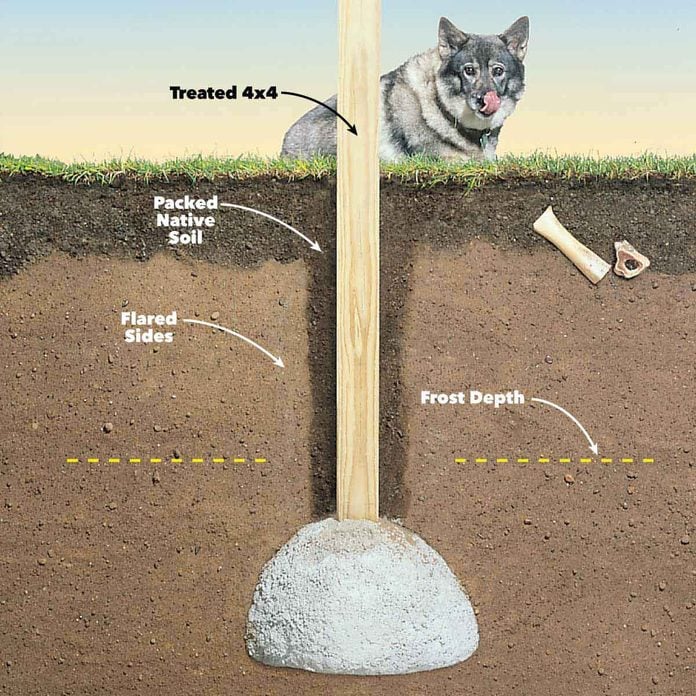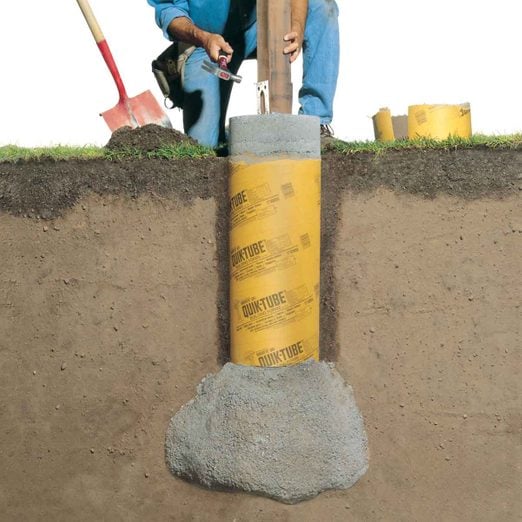Deck Footings Revealed: Recognizing the Secret Elements of a Trusted Deck Structure
Deck Footings Revealed: Recognizing the Secret Elements of a Trusted Deck Structure
Blog Article
Picking the Right Deck Footings for Stability and Toughness
When it concerns constructing a deck, among one of the most important choices you will make is choosing the appropriate footings for stability and toughness. The longevity and safety and security of your deck depend heavily on the kind of grounds you pick, as they supply the vital support and security to endure the examination of time. With a myriad of choices readily available, it can be overwhelming to determine which grounds are best suited for your certain needs. In this conversation, we will discover the various kinds of deck footings, think about the important aspects to weigh when deciding, and delve into the benefits and drawbacks of different options. By the end, you will have a clearer understanding of the options at hand and be far better geared up to make a notified decision for your deck task.
Types of Deck Footings
There are numerous kinds of deck footings that can be utilized, each offering one-of-a-kind benefits and considerations. One common type of footing is the concrete pier footing. These grounds are composed of a round opening loaded with concrete, which provides a solid foundation for the deck messages. Concrete pier footings are fairly simple to mount and supply excellent stability, making them a popular choice for numerous deck tasks.
An additional sort of ground is the helical pile footing. Helical piles are steel shafts with helical plates connected to them. These footings are set up by screwing them into the ground, which produces a safe structure for the deck. Helical pile footings are perfect for locations with tough dirt conditions, as they can be installed in almost any sort of dirt. They likewise permit easy change and progressing of the deck if needed.
Additionally, some home builders go with precast concrete grounds. These footings are made of sturdy concrete and be available in various forms and sizes to suit different deck layouts. Precast concrete footings are hassle-free to set up and provide a steady base for the deck structure.
Lastly, another alternative is the post-in-anchor footing system. This kind of footing includes driving a metal anchor right into the ground and connecting it to the deck post. It uses flexibility in terms of placing the deck messages and appropriates for decks with lightweight frameworks.
When picking the best kind of deck footing, it is important to think about factors such as soil problems, deck load, and regional building ordinance (Deck Footings). Consulting with a professional specialist or architectural engineer can assist make certain the appropriate footing is picked for a stable and safe deck
Variables to Consider When Selecting Footings
When picking the appropriate footings for a deck, it is vital to meticulously take into consideration different elements such as dirt conditions, deck tons, and adherence to neighborhood building codes. These elements play a considerable function in making certain the security and resilience of the deck framework.
Among the primary elements to think about is the dirt problems. The kind of dirt on which the deck will certainly be constructed establishes the kind of grounds called for. Decks constructed on loosened or sandy dirts may need deeper footings to provide adequate support and protect against settling. On the various other hand, decks constructed on clay or large dirts might need footings that can fit the soil's tendency to expand and agreement.
Another essential factor is the deck lots. The weight of the deck, consisting of the materials utilized and any type of possible live loads such as furnishings or gatherings, should be taken into account when selecting grounds. The grounds must be designed to bear the weight of the deck and disperse it uniformly to prevent any kind of structural issues or failures.
Lastly, adherence to neighborhood building ordinance is paramount. Structure codes vary from area to region, and it is important to adhere to the certain requirements established by the local authorities. Deck Footings. These codes make certain that the deck is developed securely and satisfies the essential requirements for architectural stability and load-bearing ability
Concrete Footings: Advantages And Disadvantages

When utilized as the structure for a deck,Concrete footings use numerous advantages and drawbacks. On the favorable side, concrete grounds provide exceptional security and durability. Concrete is a inflexible and solid material that can support heavy loads and stand up to numerous climate conditions. It also has a long life expectancy, making it a trusted choice for long-lasting usage.
One more advantage of concrete footings is their versatility. They can be poured into various sizes and shapes to accommodate various deck layouts and configurations. Concrete footings can be personalized to fit the certain demands and needs of the deck framework.
Nonetheless, there are likewise some drawbacks to using concrete grounds. This can enhance the overall price of the deck job and may call for expert support.

Helical Piers Vs. Sonotubes: Which Is Much better?
In taking into consideration the structure options for a deck, the comparison between helical piers and sonotubes is vital in establishing the superior choice. Helical piers, likewise understood as screw heaps, are steel shafts with helical plates connected to them. They that site are turned right into the ground making use of hydraulic equipment, giving a secure and durable foundation for the deck. On the other hand, sonotubes are cylindrical forms made of cardboard or fiber material that are loaded with concrete. They are placed in an opening explored the ground and give assistance for the deck.
The helical plates on the piers produce a strong hold with the dirt, stopping any kind of activity or changing of the deck. Sonotubes, on the various other hand, rely only on the concrete filling for stability, which may not use the exact same level of strength and resistance.
In terms of installation, helical piers are reasonably simpler and faster to install contrasted to sonotubes. The hydraulic machinery used to twist the piers right into the ground makes certain a quick and efficient procedure. Sonotubes, on the various other hand, need excavating openings and putting concrete, which can be taxing and labor-intensive.
In addition, helical piers are a more flexible option. If required, they can be utilized in different dirt conditions and can be readjusted or reinforced. Sonotubes, on the various other hand, may need additional assistance, such as rebar, in specific dirt problems or locations with high lots needs.
Choosing the Right Footings for Your Deck's Measurements
For optimum structural stability, it is vital to very carefully select the appropriate grounds that align with the measurements of your deck. The dimensions of your deck, including its elevation, size, and size, play a considerable function in figuring out the type and dimension of grounds required.
When choosing footings for your deck, it is necessary to consider the load-bearing ability of the soil. The weight of the deck, incorporated with the weight of any furnishings or individuals on it, exerts a significant pressure on the grounds (Deck Footings). It is crucial to choose grounds that can sufficiently sustain this weight without sinking or shifting over time.
Larger decks with higher dimensions need bigger footings to give sufficient security and assistance. The form of the footings, whether they are rounded or square, depends on the style and layout of the deck.
Final Thought
In verdict, choosing the ideal deck grounds is critical for making certain stability and resilience. Factors such as the kind of grounds, the deck's measurements, and the pros and disadvantages of different alternatives should be thought about.
These grounds are composed of a round opening filled up with concrete, which supplies a strong structure for the deck blog posts. Concrete pier footings are reasonably very easy to install and provide outstanding stability, making them a preferred option for several deck projects.
Precast concrete footings are practical to mount and provide a secure base for the deck framework.
It supplies versatility in terms of positioning the deck messages and is ideal for decks see it here with light-weight structures.
Concrete footings provide numerous advantages and negative aspects when utilized as the foundation for a deck.
Report this page